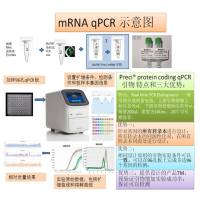T Cell Transfer Model of Colitis: A Great Tool to Assess the Contribution of T Cells in Chronic Intestinal Inflammation
互联网
互联网
相关产品推荐

Mouse Reactive Alzheimer's Disease Model Microglia Phenotyping IF Antibody Sampler Kit
¥500

Roche 7345585001 MagNA Pure 24 Tip Park/Piercing Tool
¥820

TP63/TP63蛋白Recombinant Human Tumor protein 63 (TP63)重组蛋白Chronic ulcerative stomatitis protein ;CUSPKeratinocyte transcription factor KETTransformation-related protein 63 ;TP63Tumor protein p73-like ;p73Lp40p51蛋白
¥1344

Recombinant-Mouse-Selection-and-upkeep-of-intraepithelial-T-cells-protein-2Skint2Selection and upkeep of intraepithelial T-cells protein 2; Skint-2
¥12152

Preci® mouse(小鼠) Rxfp2 (基因ID:140498) qPCR引物对 (全名:relaxin/insulin-like family peptide receptor 2;别名:Lgr8,Great,Gpr106)
¥139
相关问答

